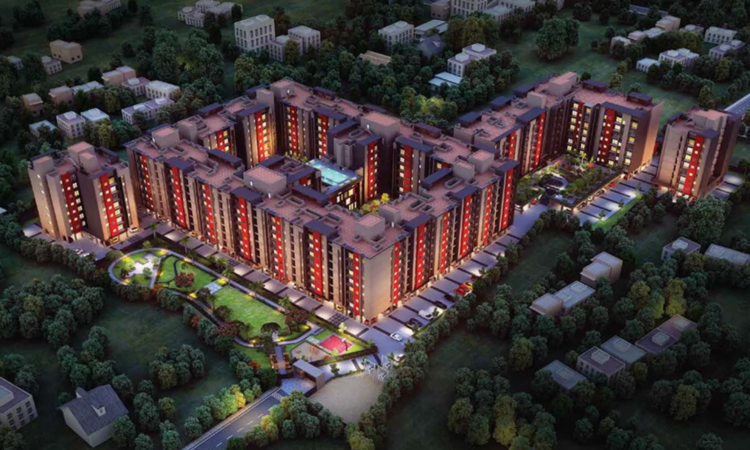Gypsum plastering is revolutionizing the construction industry in India. Research studies have shown that cement industry is a major contributor to carbon emissions across the world. It accounts for one-third of global greenhouse gas emissions. If this trend continues, the greenhouse gas emissions may double by 2050. Green buildings are constructed using naturally occurring, organic materials and resources.
Gypsum plasters have evolved to be a common material used in construction in India and are replacing cement as a plastering material. Studies have shown that green buildings and those constructed using naturally occurring materials consume 20-30% less energy and 30-50% less water than conventional buildings.
Why Gypsum plasters are appropriate for green buildings?
1. Organic materials
Gypsum is a naturally occurring mineral and found in abundance across the river beds. When you use gypsum plasters instead of cement plasters, you are actually contributing to reducing greenhouse gas emissions. Also, studies have shown that cement contributes to 8% of global greenhouse gas emissions. So, gypsum plastering is a major, sustainable alternative to cement plastering.
2. No sand requirements
In the process of cement plastering, sand is mixed with cement in various proportions say 1:5 or 1:4 depending on the building requirements. Of late, government has banned sand extraction on the river beds to prevent overexploitation of natural resources. Using gypsum plastering reduces the need for sand and so serves as an appropriate substitute for cement plastering.
3. Lower resources consumption
Gypsum plastering requires lower electricity and resources when compared to cement plastering. Gypsum plasters does not require water curing and so consumes lower amounts of water than cement plasters. So, gypsum plastering reduces consumption of resources like electricity and water.
4. Thermal conductivity and moisture retention
Gypsum plastering has lower thermal conductivity and higher moisture retention. So, it helps retain moisture and reduces the need for air conditioning requirements. When deployed in commercial buildings, it reduces the need for HVAC requirements. Also, gypsum plasters help maintain an optimal level of humidity and reduces energy needs. They help maintain a healthy environment which eventually reduces electricity costs in buildings.
Other reasons for using gypsum plasters in buildings
While in the above section, we have discussed the properties of gypsum in relation to reducing carbon emissions and lowering resources consumption, in this section, we outline the other benefits of using gypsum plastering.
1. Low cost construction
Gypsum plasters help lower the construction cost of construction by 15-20% when compared to cement plasters. It should be noted that cement prices have been continuously increasing in the last three to four years. If you are a builder engaged in construction of commercial and residential buildings, this is an important consideration.
2. Lowers labour requirements
As mentioned earlier, gypsum plastering does not require water curing as is the case with cement plastering. Also, with cement plastering it requires application of putty before painting to smooth the surface and reduce cracks. On the other hand, gypsum plastering does not require putty or POP application. So, altogether gypsum plastering reduces the need for labour.
The lower labour requirement, which is the case with gypsum plastering is an important factor in the recent times where labor availability is scarce and wage rages are rocketing high. So, if you are involved in construction, this is a crucial consideration and you must consider shifting to use gypsum plasters instead of cement plasters.
3. Lower water requirements
As mentioned earlier, cement plastering requires water curing. The cement plastered wall must be splashed with water for at least 21 days for the plaster can settle down completely. On the other hand, gypsum plasters do not require water curing and so, the overall water requirements and consumption is lower.
This point is notable given that the water table levels in many parts of the country are dropping and in major cities like Chennai, Coimbatore or Bangalore, there is water shortage and scarcity. Gypsum plastering reduces water consumption by 30 liters per feet when compared to cement plastering.
4. Improves the strength of high-rise buildings
Gypsum plasters have lower density and higher compressive strength when compared to cement plasters. Also, it is proven that gypsum plasters reduce plastering weight by 35%. Using gypsum plastering in high-rise buildings increases their resistance of buildings to natural disasters like earthquake, high speed winds, etc. This is important in cities where high-rise buildings are common. Also, cities are densely populated and highly vulnerable to natural disasters like earthquakes.
5. Excellent acoustics
Gypsum plastering enhances the acoustics of buildings. This is of great importance in major cities like Coimbatore, Chennai, Bangalore, etc. where sound pollution is a major problem. Also, for builders engaged in construction of commercial buildings like hospitals, educational institutions, shopping malls, etc. sound proofing is an added advantage. So, for construction of commercial buildings and residential buildings in major cities like Coimbatore, Chennai, etc., gypsum plastering is advantageous.
Looking for gypsum plastering?
Kanish Plaster is a leading gypsum plastering service provider in India with presence in major cities like Coimbatore, Chennai, Bangalore, Delhi, Mumbai, etc. We offer turn key services from sourcing, application, to quality checks and follow ups. If you are looking for gypsum plastering service provider, contact us at www.kanishplasters.com



